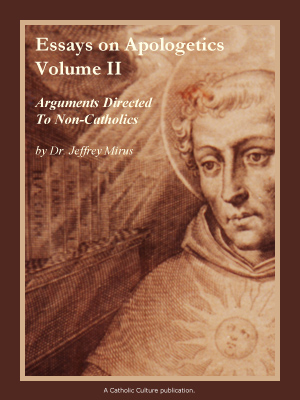Catholic World News News Feature
America's disappearing nuns: what the apostolic visitation can and should find February 02, 2009
Responding to the announcement that the Vatican has begun an apostolic visitation of women's religious orders in the US, the Leadership Conference of Women's Religious announced:
We hope that the results of the apostolic visitation will demonstrate the vitality and depth of the life and service of women religious in the United States.
But let's be honest: A report concentrating on the "vitality" of women's religious orders in the US today would be a work of fiction. In the past 40 years the Church in America has seen a disastrous fall in the number of women religious, combined with a frightening degree of dissidence and disorientation among the members of what were once the country's largest religious orders.
The official web site of the apostolic visitation announced this past weekend acknowledges this problem-- admittedly in gentler language. "Like other vocations in the Church, religious life has passed through challenging times." But that mild phrase, "challenging times," is linked to a series of charts that illustrate the problem in hard, cold figures.
The lines of the graphs are pitched steeply downward. The number of nuns in the US today stands at under 80,000: less than half of the number serving the Church in 1965. The median age of the surviving nuns is still climbing, threatening the complete disappearance of some entire religious orders.
What the numbers do not say, but observant American Catholics know, is that some of the largest religious orders that once staffed parochial schools and administered Catholic hospitals have now surrendered their traditional roles, instead taking up fashionable political causes. More than a few nuns have been caught up in feminism and eco-spirituality.
Is there any reason for optimism for the future of women's religious orders in the US? As the apostolic visitation was announced, a spokesman indicated that there was. Sister Eva-Marie Ackermann said: "We hope to discover and share the vibrancy and purpose that continue to accomplish so much," she said, "as well as to understand the obstacles and challenges."
The "obstacles and challenges" are easy to understand. But where can that "vibrancy and purpose" be found? That statement demands a closer look.
Sister Ackermann is not saying that "vibrancy and purpose" characterize all of America's religious orders. The apostolic visitation is designed to "discover" those qualities, and "share" them-- that is, to find healthy religious communities, analyze their strengths, and propose them as models for emulation.
Last September, during a conference on religious life held at Stonehill College in Massachusetts, the prefect of the Congregation for Religious offered a few important insights into the thinking that prompted the Vatican to begin this investigation of American religious life. "In the last 40 years," Cardinal Franc Rodé told his Stonehill audience, "the Church has undergone one of her greatest crises of all times." The impact of that crisis on religious life in Europe has been devastating, he observed. But in the US: "Since the Second Vatican Council, more than a hundred new religious communities have sprung up in this fertile soil."
The landscape is not altogether barren, then; there are clusters of promising growth. New communities have appeared, typically embracing traditional models, and attracting many young women. While many older religious communities appear to be in their death throes, the cardinal reported, there are younger ones "are thriving and whose individual statistics are the reverse of the general trends."
In other cases, Cardinal Rodé continued, old religious orders have rediscovered their traditional charisms, and "they are also in a growth mode, contrary to the general trend, and their median age is lower than the overall average for religious."
These, then are the pockets of "vibrancy and purpose" that the apostolic visitation might identify. Cardinal Rodé, in his Stonehill speech, contrasted them with two other sorts of religious communities. There are some, he said, that "have simply acquiesced to the disappearance of religious life or at least of their community." Others, still worse, "have opted for ways that take them outside communion with Christ in the Catholic Church, although they themselves may have opted to “stay” in the Church physically."
The cardinal's assessment is unsparing in its accuracy. He knows the problems that trouble religious life in America today: the dwindling of some women's orders, the rebelliousness of others. The apostolic visitation will surely encourage the growth of healthy communities. Just as certainly, it will help Church leaders identify the religious communities that are doomed to fail, and/or to cause grave problems for the Church, if they do not promptly change their directions.







